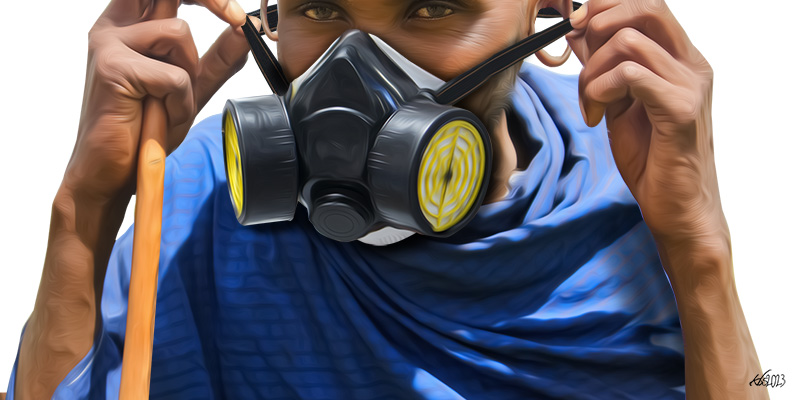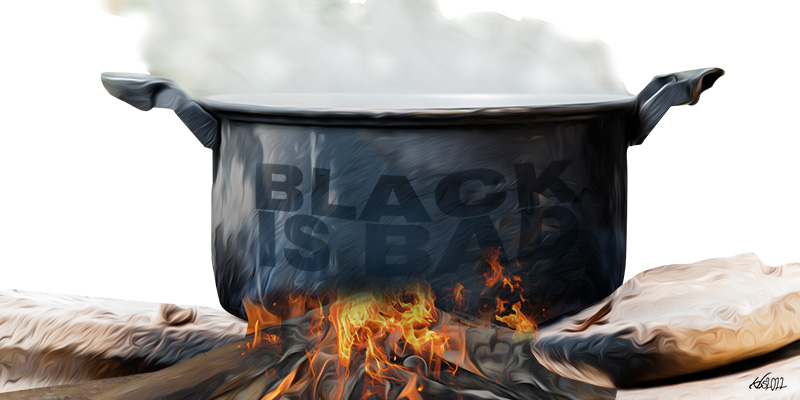On my first visit to Mogadishu in November 2011, what struck me most about the city – apart from the shattered, bullet-ridden buildings and the broken infrastructure – was how visible the city’s women were. Women of all ages – some veiled in black hijabs, others donning colourful headscarves – were all over the city running all manner of enterprises, from selling petrol stored in huge drums (apparently, there were no petrol stations in Mogadishu then) to hawking khat and vegetables from makeshift stands along the roads.
Outside the mayor’s office, there were long lines of women queueing up for jobs, mostly those of street cleaners. The entrance to the office was also “manned” by a few female security guards who obviously had little training but who had been hired nonetheless. Women were literally running Somalia’s capital city.
“Where are the men?” I asked a male Somali aid worker. “Busy having coffee and gossiping about politicians,” he quipped, only half-jokingly.
Throughout Mogadishu, especially in the late afternoon, I would see men gather in coffee and tea shops and restaurants to gossip, chew khat or ponder the future of their war-torn country. Women were not part of these gatherings, I realised, because they were too busy working and taking care of their families
In fact, throughout the civil war in Somalia, it was women who kept the country running. Like in many countries ravaged by conflict, Somali women have developed a deep resilience and a practical business acumen. Women became the main breadwinners during the conflict when battles between clans and “revenge killings” had decimated large sections of the male population. Gender roles became confused and distorted, because physical and social disruptions caused by the conflict had eroded men’s gender roles as providers and protectors. So women took on greater financial responsibilities, but with little authority within the family and community. (Authority in much of Somalia rests with male clan elders, who are considered the leaders and arbiters of their respective clans. Even women who head households have little decision-making powers within their own families.)
So while men sat around in cafés sipping tea, gossiping or jostling for power or influence in Somalia’s highly dysfunctional clan-based federal government (whose capacity to provide basic services is almost nil; most services, such as education, are provided by private individuals or Islamic charities), women were taking the lead in providing essential services, such as healthcare.
Although provision of healthcare is scanty or virtually non-existent in many parts of Somalia, in places where there are health facilities, you are likely to find women running them. The reason, I believe, is because when there are no healthcare facilities, women suffer the most, because not only do they need these services more than men (especially in their childbearing years), but also because they are the primary care providers for their children and families. Hence, they have a vested personal interest in ensuring that these services are available.
One woman’s hospital
The death of Dr Hawa Abdi Dhibwale in Mogadishu this month at the age of 73 has highlighted how critical women’s contribution has been to the provision of healthcare in Somalia. Dr Hawa Abdi was born in Mogadishu when Somalia was still a United Nations Trusteeship under British administration. (After the Second World War, Italy lost its colonies in Africa, including Somalia.) In the 1960s, after Somalia gained independence, she studied medicine in Kiev, which was then part of the Soviet Union. After obtaining her medical degree in 1971, she returned to Mogadishu where she worked as a physician while studying law at night. (The decision to study law was made after she learned that Somali laws prevented female relatives from inheriting land.)
In 1983, she set up a one-room clinic on her family-owned farm 20 kilometres outside Mogadishu, where she provided free obstetric and gynaecological services to rural women. In an interview, she said she decided to open the clinic because she couldn’t believe that rural women in Somalia had almost no access to neonatal services. The clinic eventually evolved into a 400-bed hospital and relief camp. During the 2011 famine in Somalia, the camp housed 90,000 drought-stricken people on the 1,300 acres surrounding her hospital.
Working in Somalia was, of course, fraught with difficulties. She faced constant pressure and threats from the terrorist group Al Shabaab, who in 2009 tried to shut down her hospital. Many of her experiences of running the hospital under precarious circumstances are captured in her 2013 memoir, Keeping Hope Alive: One Woman, 90,000 lives.
Dr Hawa Abdi’s amazing work in a hostile and difficult environment gained her recognition and awards internationally. In 2016, the University of Pennsylvania awarded her an honorary Doctor of Science degree. The following year, she received an honorary Doctor of Law degree from Harvard University. In 2012, Dr Hawa Abdi was also on the shortlist of nominations for the Nobel Peace Prize. If she had won, she would have been the first Somali to have ever been awarded this honour.
Dr Hawa Abdi’s two daughters, Deqa and Amina, who are also medical doctors, are continuing with her work through the Dr Hawa Abdi Foundation.
Providing maternal care in Somaliland
It is interesting – but perhaps not so surprising – that Somali women are leading the campaign to provide healthcare to their people. In Somaliland (which broke away from Somalia in 1991 but has still not gained international recognition as a sovereign state), Edna Adan Ismail, who qualified as a nurse-midwife, established a maternity hospital that has gained international acclaim.
In a part of the world where maternal and child mortality rates are extremely high, and where there is a high prevalence of female genital mutilation (FGM) – which makes childbirth complicated, if not life-threatening – Edna Adan’s maternity hospital in Hargeisa provides much-needed assistance to thousands of pregnant women.
Adan, who was circumcised when she was just eight years old, also campaigns against FGM, though she does not talk openly about it like many Western feminists might because it is still a delicate topic, and being so widespread (it is estimated that almost all Somali women and girls aged between 15 and 49 have undergone this painful procedure), it is difficult to broach the subject in a way that will not offend the women she is trying to reach.
I met this remarkable woman at the Hargeisa Book Festival in 2014. I found her not only to be extremely articulate and fluent in English (she was once Somaliland’s foreign minister), but very committed to her work and vision. She spoke about her well-equipped maternity hospital that has trained more than 1,500 nursing students, and the need for more women to go into the field of medicine.
When I asked her about what she was doing to eradicate FGM, she did not answer directly; instead, she handed me a brochure, which had detailed drawings of the procedure, and which explained why it was a health risk for women and girls. (It was only later that I became aware about why most Somali women do not like to talk about their personal experiences of FGM. It is because, as one female Somali writer based in the UK told me, “Somali women don’t like to be reduced to their vaginas”.)
The obsession with FGM and hijabs also obscures the fact that women’s oppression is structural and systemic – women and girls will be raped, violated or oppressed even if they stop undergoing FGM and even if they throw off their hijabs. As the Sudanese women’s rights activist Hala Al-Karib noted, “Most Northern institutions reduce women’s rights and violations against women to a one-dimensional fight against FGM . . . In this context, the rhetoric of gender mainstreaming becomes a box-ticking exercise while minimising the root causes of women’s subordination and the politics behind the subordination. The few publicly-aware activists become the outsiders, bearers of bad news, and are often labelled difficult – too political.”
Coming home
There are many Somali women living abroad who have decided to go home and contribute to their society. It seems astonishing to me that so many of these women in the diaspora would choose to do this, given the dangers and risks involved and given that Somalia is a highly patriarchal society where the threat of sexual discrimination and violence are ever-present. Hodan Nalayeh was one such woman.
Hodan, a Canadian citizen and broadcast journalist, returned to her homeland in 2014 to make a documentary about Mogadishu. She said she made the decision to leave Canada and go back to Somalia because “nobody looked at me like I was strange, nobody cared if I had a dark complexion . . . And we never had that belonging in the diaspora”. More importantly, she came back because her “country needed her”.
She then launched the popular Integration TV on YouTube to tell “positive stories” about Somalia. After visiting Kismaayo (once the stronghold of Al Shabaab), for example, she posted images of its beautiful beaches and stunning sunsets. She told the BBC that her mission was to “uplift the spirit and inspire young Somalis around the world to take charge of their destinies”.
Hodan and her husband were tragically killed last year in an attack on a hotel in Kismaayo believed to have been carried out by Al Shabaab. She was 43 years old and pregnant at the time. After her death, a Twitter user posted: “I don’t know a single Somali who didn’t fall back in love with Somalia through Hodan Nalayeh’s broadcasts”.
Giving women a voice
Hodan’s death was a tragedy, but her resilience and spirit reflect the desire of so many Somali women to see their country become a functioning state. I truly believe that if more women like Dr Hawa Abdi, Edna Adan and Hodan Nalaye took over the running of their country, Somalia wouldn’t be in the mess it has been in for the last thirty years.
The civil war in 1991 devastated Somalia, but rebuilding the country has been an almost impossible enterprise due to clan divisions, corruption, and Islamic fundamentalist forces that are sustained through extortionist practices (such collection of “protection money” – a form of taxation imposed on people who live in Al Shabaab-controlled areas) and foreign meddling and financial support to regressive forces within Somalia.
I don’t mean to generalise, but I do feel that if there were more women entering Somalia’s very divisive and corrupt politics – where clan and gender often determine who gets what position – the country would have more schools, more hospitals and better services.
Women would also ensure that regressive legislation that is harmful to women and girls, like the “Sexual Intercourse Related Crimes Bill” that was tabled in Somalia’s parliament recently, would not see the light of day. This bill, if passed, will not only allow child marriage once a girl’s “sexual organs are mature”, but would also allow forced marriage “as long as the family gives consent”. Critics say the bill would weaken protection for victims of sexual violence, especially girls, and would contravene international human and women’s rights conventions.
Anarchy and lawlessness in Somalia have embedded a culture of violence that allows men to rape with impunity. A survey by Trust Law, a project of the Thomson Reuters Foundation, found that Somalia was one of the worst places in the world to be a woman. There have been cases of women being ostracised and even killed when they report having been raped.
Therefore, male-dominated governing bodies in Somalia, including clan elders’ councils, cannot be trusted to ensure that women and girls in Somalia are protected and get the services they – and all Somalis, including men – need. Women should be given a voice in the running of their country because, being the “invisible clan”, women are more likely than men to unite their divided, clan-based country, and bring about a semblance of sanity, gender-sensitivity, order and accountability in the country’s nascent governance and administrative structures.








